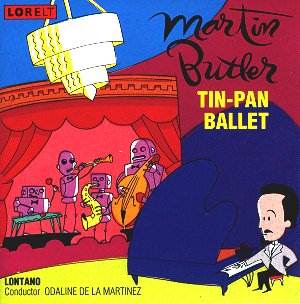 Composer: Vagn Holmboe
Composer: Vagn Holmboe
Works: Suono da Bardo – Symphonic Suite (1949), Sonatina Briosa (1941), Suite (1931), Rumaesk Suite (1937), Small Piano Pieces (1930-32)
Performers: Anker Blyme (piano)
Recording: 2-3 September 1998, Birkerod
Label: Danacord DACOCD 502
Vagn Holmboe, a quintessential figure in 20th-century Danish music, presents a compelling yet often overlooked facet of his oeuvre in this collection of piano works, expertly performed by Anker Blyme. Spanning from Holmboe’s early explorations in the 1930s to the more mature reflections of his later career, these compositions are imbued with a distinctive Nordic character, revealing both his personal experiences and the broader cultural narratives of his time. This anthology invites a reassessment of Holmboe’s piano music, which, while not as frequently performed as his orchestral and chamber works, deserves a prominent place in the concert repertoire.
The recording opens with the Sonatina Briosa, a wartime composition which is striking in its duality. The first movement, marked by a jarring, almost mechanistic dance, contrasts sharply with the serene, ‘raindrop’ Allegretto placido at its center. Blyme’s interpretation uncovers the malignant undertones of the outer movements, capturing the disquiet that permeates the music. The technical precision required for the rapid passages is met with impressive clarity, allowing the listener to appreciate Holmboe’s intricate counterpoint and textured harmonies. The final movement returns to a sense of relentless drive, a hallmark of Holmboe’s later style, and Blyme navigates these complexities with a commanding presence.
Holmboe’s Suite of 1931, written for his fiancée Meta Graf, showcases a more lyrical side of his compositional voice. The work’s bright simplicity evokes a spring morning, reminiscent of John Ireland’s pastoral works, yet it is tinged with a darker undertone that reflects Holmboe’s unique perspective. Blyme’s interpretation imbues each movement with a delicate touch while maintaining an underlying emotional intensity, most notably in the third movement, where the interplay between the hands reveals an intricate dialogue that is both intimate and expansive.
The Small Piano Pieces, a collection of seven brief vignettes, exhibit Holmboe’s gift for distilled expression. Here, Blyme’s nuanced phrasing and attention to dynamic contrast bring forth the childlike innocence of some pieces while revealing the more profound emotional depths of others, particularly in the Bach-like Andante. This duality speaks to Holmboe’s ability to blend simplicity with sophistication, a trait that Blyme captures with finesse.
In the Rumaesk Suite, Holmboe channels the essence of his Romanian folk experiences, embedding gypsy motifs and rustic rhythms into the fabric of the music. This suite serves as a vibrant testament to the couple’s travels and their collection of folk songs. Blyme’s performances here are particularly engaging, as he breathes life into the rural character of the music, deftly navigating the folk influences without losing the harmonic complexity characteristic of Holmboe’s style.
The major work on this disc, Suono da Bardo, is a substantial and compelling exploration of the psyche, laden with rich imagery and emotional depth. Running nearly 35 minutes, it dominates the album’s landscape. Blyme’s interpretation of the dissonant yet lucid textures draws parallels to the stark landscapes of Sibelius, yet with a more austere emotional weight. The music unfolds through a series of transformations reminiscent of Liszt, leading the listener through a labyrinth of contrasting emotions. The clarity of Blyme’s articulation allows the intricate right-hand passages to shimmer, while the left-hand’s grounding harmonies provide a profound sense of movement and progression. The recording quality enhances this experience, capturing the nuanced dynamics and tonal colors of the piano with exceptional fidelity.
The sound engineering of this release merits particular praise, as it conveys the full spectrum of Blyme’s tonal palette, from the crystalline highs to the resonant lows, creating an immersive listening experience. Compared to other recordings of Holmboe’s works, this release stands out for its attention to detail and the robust interaction between the pianist and the acoustic space.
Holmboe’s piano works, as presented in this recording, reveal a composer deeply engaged with the human experience, expressed through a lens of Nordic sensibility and folk influences. Anker Blyme’s performances are not only technically accomplished but also infused with a keen interpretative insight that resonates throughout the collection. This disc serves as a vital contribution to the understanding of Holmboe’s legacy, illuminating a repertoire that deserves greater visibility in concert halls and among enthusiasts of 20th-century music.



